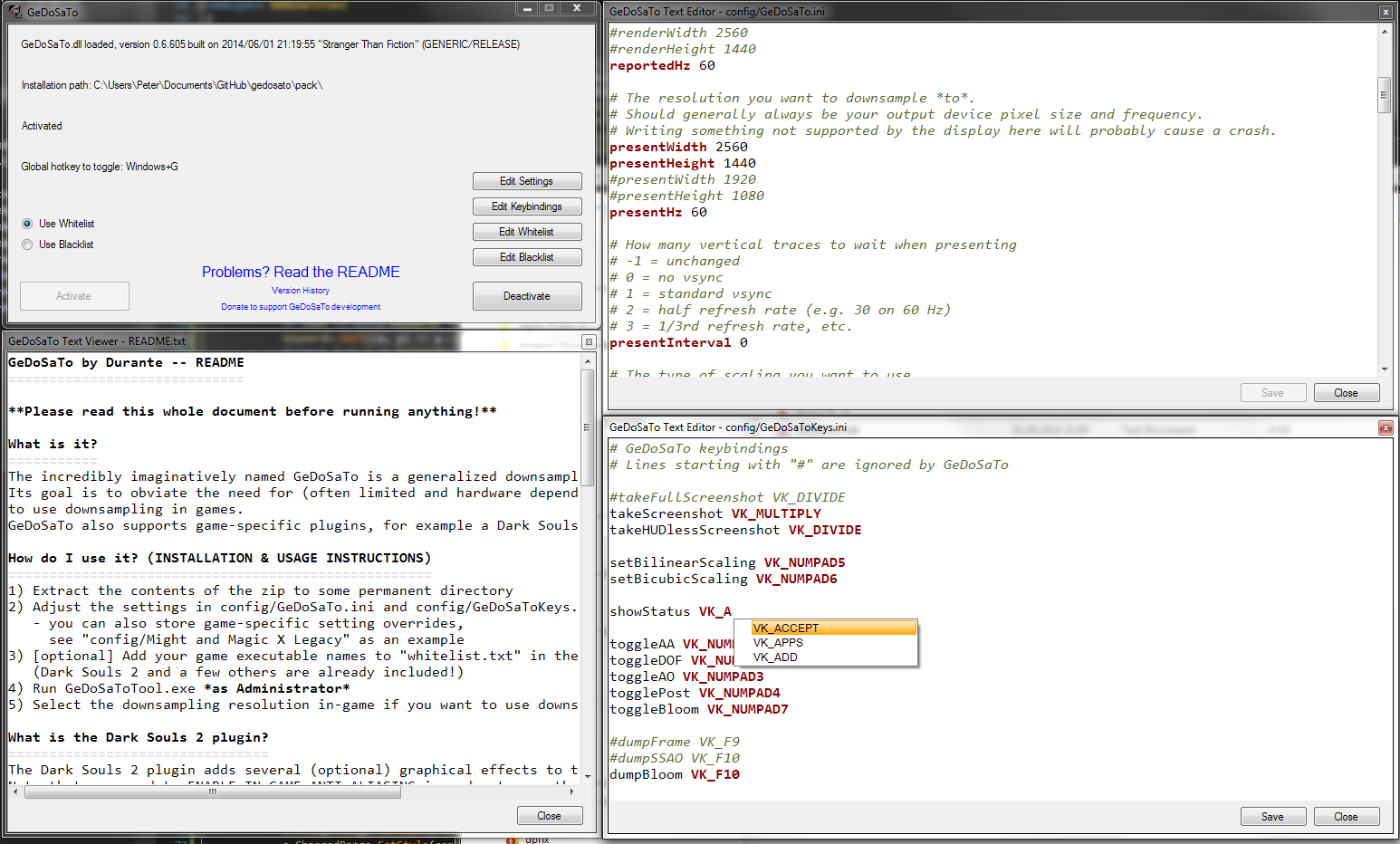Two weeks have passed, time for another release. Lots of fixes and additions in this one, and also many new profiles. My article seems to have worked to at least some extent, it’s great to see pull requests popping up on GitHub (even if most are not code).
Changelist:
- General:
- Added feature to disable HUD (in games with a targeted injection profile)
- Added keybinding to toggle through scaling methods
- Added option to prevent Steam Overlay loading (thanks GoaLitiuM)
- Added “loadD3DEarly” compatibility option
- Now possible to list and query readable app name from whitelist
- Fixed downsampling with more than 3 levels
- Fixed stupid typo preventing games with backbuffer formats other than the default from working correctly (thanks Boulotaur2024)
- Fixed crash when framedumping, store framedumps as TGA, create folders for each
- Fixed crash with special characters in blacklist/whitelist entries
- Fixed “interceptOnlySystemDlls” with nonstandard system paths
- GeDoSaToTool:
- Can now sort black/whitelists
- Fixed working directory when launched at windows startup
- Generic Plugin:
- Show exe name and (if available) readable name in status display
- Added option to target screenshots/postprocessing to specific renderstate changes (“injectRenderstate [state],[value]” — example of use in Ys Origin profile)
- Added lots of profiles, thanks to all the contributors
Download GeDoSaTo 0.10 “Poltergeist” here. And if you just found out about GeDoSaTo or have been using it for a while and want to encourage further work on it donations are always welcome.
One more thing: if you want to report bugs or request features, please do so at github. It’s much easier to follow, manage and discuss such things there than in the blog comments!


